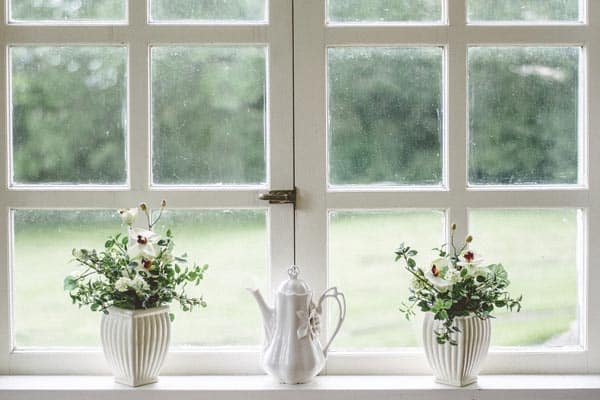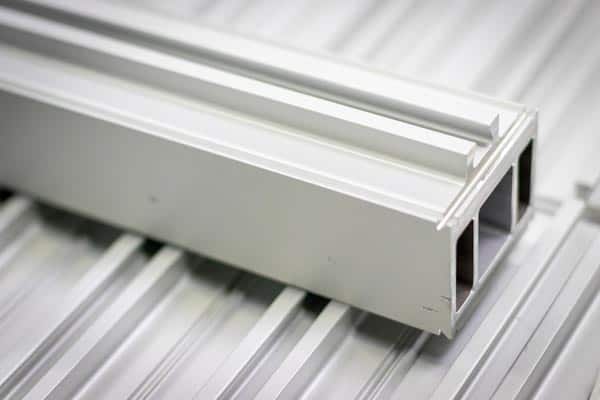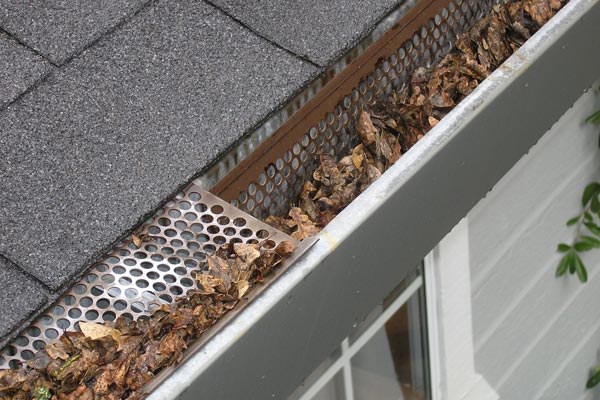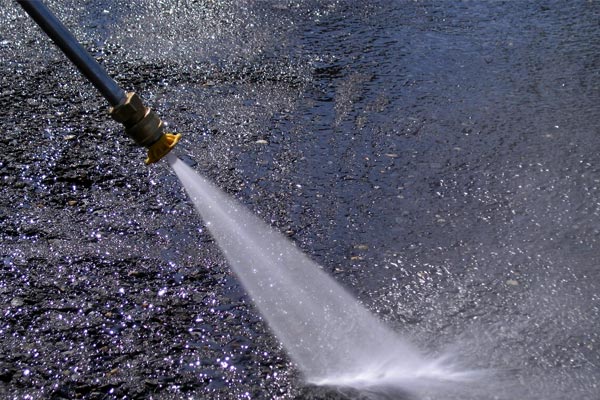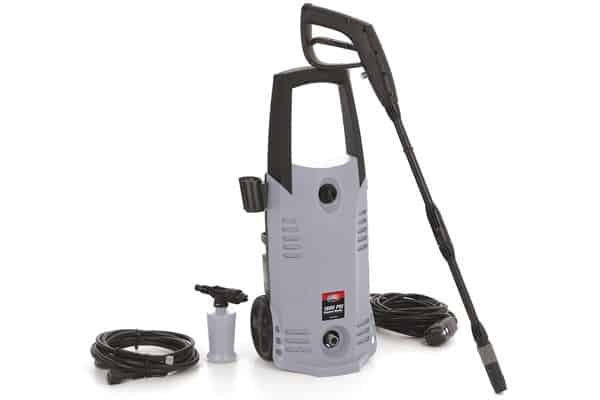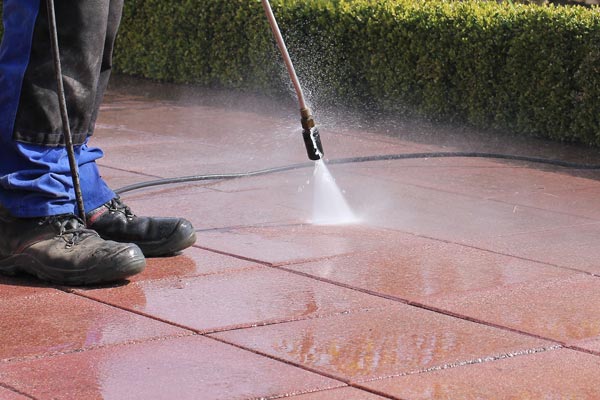Why Pressure Washing Windows Can Cause Damage and How to Avoid It
A pressure washer shoots a concentrated jet of water, so it would stand to reason that it could clean your windows enough to leave them sparkling.
However, there are very real concerns about whether or not a pressure washer could damage your windows if you accidentally hit them with too much pressure.
Since replacing windows is expensive and time-consuming, this is a very valid concern.
Can Pressure Washing Damage Windows?
Using a pressure washer to clean the windows on your home is very popular, but it can cause a huge amount of damage if you’re not careful. If you’re not careful, you can easily shatter the windows and cause the glass to fly everywhere. However, it can strip away algae, mildew, and acidic salt and dirt if you do it correctly.
Although pressure washing basics are relatively straightforward, it takes a high amount of finesse to clean glass or windows. You can easily damage the window housing and panes if you’re not careful, but there is a way to pull this project off if you follow this guide.
How to Pressure Wash Windows Without Causing Damage
There are a few things you can do to reduce the risk of damage to your windows if you decide to pressure wash them to speed up the project.
Following the tips below will allow you to get sparkling clean windows without any damage to the glass or pane housing.
1. Assess Your Window’s Condition
One of the biggest things you can do before you pressure wash your windows is to inspect them before you even break out the pressure washer.
Look for any broken window seals or cracks in the glass, and one hit that you have broken seals on double-paned glass is condensation buildup or loose panes.
If you see these issues, you want to fix them before you apply a jet of water.
All repairs and caulking should be sound before you clean them because of any broken seals or cracks and allow the window to shatter or water to leak into your home.
2. Know How to Use Your Pressure Washer
Learn how to use your pressure washer correctly to help prevent damage, and you can watch YouTube videos to learn the proper techniques.
The pressure washer manufacturer will also put out tutorials that you can search for that explain how to use the unit.
If you rent the pressure washer, ask the store for tips. They’ll give you advice and tips that you won’t get from typical manuals.
3. Prepare Your Area
Remove any screens from your window because the jet from the pressure washer can shred them, and make sure you tightly close your windows.
Water any soil underneath your windows to help dilute any chemicals that will come from your cleaning solution when you spray your windows.
Make a point to cover or close off all electrical outlets to prevent water from getting into them.
Give the pressure washer a run on an open space to ensure that every part is working correctly before you turn it toward your windows. Put protective gloves and safety glasses on before you start the project to protect yourself.
4. Put Soap in the Reservoir
There are several multi-use detergents or soaps available for pressure washers, and you may want to consider the Sun Joe brand that works for cars and windows.
Simple Green works well on decks or siding, and you can safely use it on windows too. If you want to cut out the chemicals and go the natural route, you can use vinegar.
Just make sure that your pressure washer’s reservoir is clean, so you don’t accidentally mix chemicals.
5. Set the Correct Pressure with the Right Wand
You’ll get a host of wand attachments or nozzle tips that allow you to pick out how wide you want your spray to be.
Any nozzle that comes with a width of zero degrees gives you a very forceful and pinpoint spray that will shatter glass.
You should pick out a 40 to 60-degree nozzle to clean your windows without causing any damage.
Along with being careful of the spray width, you also have to mind the PSI rating of your chosen water jet. Make sure you pick out a lower pressure when you clean delicate surfaces like glass.
Any pressure washer you pick out for this task should offer a variety in the PSI rating to ensure you don’t cause any damage.
The next consideration you should keep in mind is how far away you should stand when you aim for your windows.
Even if you pick out a wider fan for your nozzle, it’ll still put out a huge amount of pressure that can shatter glass.
Stand 10 feet away to start from your windows and gradually close the distance by walking closer.
The recommended distance you want to be is three to five feet away from the glass, but you should know when to stop by watching the windows as you approach them.
6. Apply Detergent and Rinse
Try to spray the soapy water at a 45-degree angle to the trim and window once you switch your pressure washer on.
This angle will help you remove and lift dirt and debris from the window trim more effectively than trying to aim the jet of water head-on.
Once you finish cleaning the windows, you have to rinse the soapy water off. You do this by switching the pressure washer off and removing all of the soap from the reservoir.
Change the tip to a 15 or 20-degree angle tip to give yourself a strong stream of water that will remove any loose dirt or soapy residue.
Start at the top of the window and sweep the water down to ensure you remove anything and make sure you give it a few days to dry.
When you finish cleaning, take a look at the glazing and caulk on and around the window to make sure it’s in good condition.
Generally speaking, you have to work very carefully when you take on this project, and some companies recommend that you don’t clean any double-paned windows using this method because they’re much more prone to damage than single-paned windows.
How Big of a Risk is the Pressure Washer’s Jet to Break the Windows?
Using a pressure washer on your window isn’t likely to cause a lot of damage if you take the proper care and precautions before you start the process.
If you choose to ignore some factors, there is a higher chance of causing breakage or damaging the panes.
Some big factors you should consider before you start include:
- How you prepare the surrounding area
- The spray nozzle you pick out
- The window’s conditions
- The pressure you choose to use
The Best Time of Year to Tackle this Project
You should wait for optimal weather conditions before you pressure wash your windows, and it’s best done on overcast or cloudy days with as little wind as possible.
Trying to tackle this project in direct sunlight or windy days can cause your cleaning solution to dry out before you start rinsing it off. In turn, you get sunspots and streaks on the windows, and this can ruin the final look.
The temperature also matters, and you want to make sure it’s not snowing or raining when you pressure wash your windows.
When you choose to wash higher windows, you won’t be able to dry them off with a rag. Waiting for an overcast day will allow them to dry completely with as few sunspots or streaks as possible.
It’s a good idea to pressure wash in the late spring months as the rain starts to subside and the weather heats up.
Why Pressure Wash Your Windows
Deciding to use your pressure washer on your windows can be a big decision on your part, especially when you combine the expense of buying or renting a pressure washer and the very real possibility of damaging your windows.
There are three big times when you may want to pressure wash your windows, including:
- When the windows are very dirty
- When you have to reach crannies or nooks that are out of reach
- When you need to wash higher windows
They work well if you have a lot of dirt or general grime on your windows from years of use and you’re not ready to try and wash them by hand. It could take a project that could take a full day or two and switch it to one afternoon.
It’s also a great option if you have second-story or higher windows that you need to clean without setting up scaffolding or ladders.
Bottom Line
It’s possible to pressure wash your windows as long as you take steps to prevent damage and avoid cracked windows or damaged window panes.
As long as you’re careful, you can get sparkling clean windows in a fraction of the time using your pressure washer.
